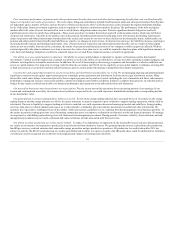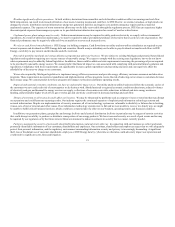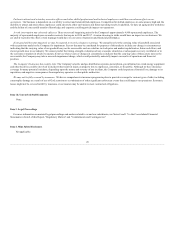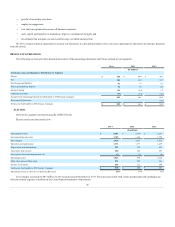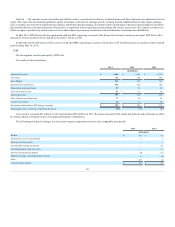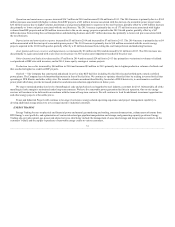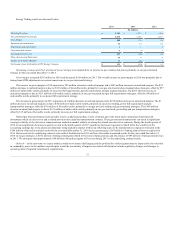DTE Energy 2014 Annual Report Download - page 27
Download and view the complete annual report
Please find page 27 of the 2014 DTE Energy annual report below. You can navigate through the pages in the report by either clicking on the pages listed below, or by using the keyword search tool below to find specific information within the annual report.
We are subject to extensive environmental regulation. Additional costs may result as the effects of various substances on the environment are studied
and governmental regulations are developed and implemented. Actual costs to comply could vary substantially. We expect to continue recovering
environmental costs related to utility operations through rates charged to our customers.
DTE Electric is subject to the EPA ozone and fine particulate transport and acid rain regulations that limit power plant emissions of sulfur dioxide and
nitrogen oxides. Since 2005, the EPA and the State of Michigan have issued additional emission reduction regulations relating to ozone, fine particulate,
regional haze. mercury, and other air pollution. These rules will lead to additional emission controls on fossil-fueled power plants to reduce nitrogen oxide,
sulfur dioxide, acid gases, particulate matter and mercury emissions. To comply with these requirements, DTE Electric spent approximately $2.2 billion
through 2014. It is estimated that DTE Electric will make capital expenditures of approximately $100 million in 2015 and up to approximately $30 million
of additional capital expenditures through 2019 based on current regulations.
As directed by a June 2013 Presidential Memorandum, the EPA is implementing regulatory actions under the Clean Air Act to address emissions of
greenhouse gases (GHGs) from the utility sector and other sectors of the economy. Among these actions, the EPA is proposing performance standards for
emissions of carbon dioxide from new and existing electric generating units (EGUs). The new source performance standards for new EGUs were proposed in
September 2013 and the standards for existing, reconstructed and modified EGUs were proposed in June 2014. The EPA plans to issue a final standard for
both new and existing sources by July 2015 as described in the June 2013 Presidential Memorandum.
DTE Energy is an active participant in working with the EPA and other stakeholders to shape the final performance standards for new and existing
power plants. The carbon standards for new sources are not expected to have a material impact on the Company, since the Company has no plans to build
new coal-fired generation. It is not possible to determine the potential impact of future regulations on existing sources at this time. Pending or future
legislation or other regulatory actions could have a material impact on our operations and financial position and the rates we charge our customers. Impacts
include expenditures for environmental equipment beyond what is currently planned, financing costs related to additional capital expenditures, the purchase
of emission credits from market sources, higher costs of purchased power, and the retirement of facilities where control equipment is not economical. We
would seek to recover these incremental costs through increased rates charged to our utility customers as authorized by the MPSC.
Increased costs for energy produced from traditional coal-based sources could also increase the economic viability of energy produced from renewable,
natural gas-fired generation and/or nuclear sources, from energy efficiency initiatives, and from the potential development of market-based trading of carbon
offsets which could provide new business opportunities for our utility and non-utility segments. A June 2014 U.S. Supreme Court decision on the EPA’s
authority to regulate GHG emissions under permitting programs of the Clean Air Act is expected to have little effect on DTE Energy since the Supreme
Court's decision upholds the EPA’s authority to regulate GHGs at sources that are already subject to permitting due to emissions of conventional pollutants.
In addition, the Supreme Court's ruling does not affect the EPA’s current proposed carbon performance standards at new or existing power plants. At the
present time, it is not possible to quantify the financial impacts of these climate related regulatory initiatives on DTE Energy or its customers.
See Note 17 to the Consolidated Financial Statements in Item 8 of this Report, "Commitments and Contingencies" and Items 1. and 2. Business and
Properties for further discussion of Environmental Matters.
The next few years will be a period of rapid change for DTE Energy and for the energy industry. Our strong utility base, combined with our integrated
non-utility operations, position us well for long-term growth.
Looking forward, we will focus on several areas that we expect will improve future performance:
• electric and gas customer satisfaction;
• electric reliability;
• rate competitiveness and affordability;
• regulatory stability and investment recovery for our utilities;
25





